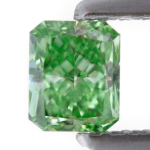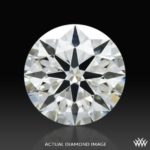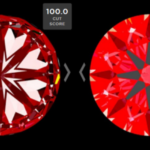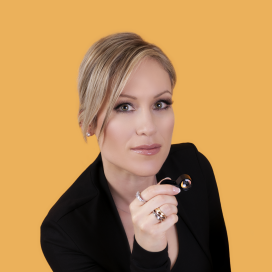The De Beers Monopoly And Continuing Evolution of The E-Ring
A circle symbolizes perfection, balance, eternity, peace and unity. It is no surprise that humans have been wearing rings since ancient times to symbolize their love, faith and friendship to one another. In the 8th century Christians exchanged rings during their wedding ceremonies, and in the 14th century rings were given to one another regularly as jewelry. It is believed that in 1477, the Archduke Maximilian of Austria gave the world’s first diamond ring to Mary of Burgundy. And so the romantic notion of giving diamond engagement rings as a symbol for everlasting love thus began.
Or Did It?
It is true that only royalty or the very wealthy could afford jewelry adorned with diamonds and other semi-precious stones. They were afterall, extremely expensive due to their rarity and difficulty to come by. However, all this changed in 1870, when several diamond mines were discovered near the Orange River in South Africa. Diamonds were discovered by the ton and the market was suddenly flooded. This discovery changed the availability and affordability of diamonds for the general public and the British financiers were now worried that their investment was now suddenly lost due to the large numbers of diamonds now being produced.
Thus, in 1888 De Beers Consolidated Mines, Ltd was created in order to merge all major investors interests into a single entity that would be powerful enough to control production as well as continue the fantasy that diamonds are scarce. At its height, for most of the 20th century, De Beers and its subsidiaries either directly owned and controlled all diamond mines in southern Africa as well as diamond trading companies in England, Portugal, Belgium, Switzerland, Holland and Israel.
“A Diamond Is Forever” – Is Born
 It is a sad truth that the diamond engagement ring is mostly a creation of the 20th century and is a direct result of the De Beers worldwide monopoly and subsequent marketing of diamonds. It was in 1947 that Frances Gerety, a young copywriter for N. W. Ayer & Son coined the famous advertising line, “A Diamond is Forever” for De Beers. The concept of diamonds lasting for eternity perfectly characterized the magical qualities that De Beers wanted to attribute to diamonds. Similarly, other successful campaigns include: the “eternity ring”, the “trilogy ring”, and the “right hand ring”.
It is a sad truth that the diamond engagement ring is mostly a creation of the 20th century and is a direct result of the De Beers worldwide monopoly and subsequent marketing of diamonds. It was in 1947 that Frances Gerety, a young copywriter for N. W. Ayer & Son coined the famous advertising line, “A Diamond is Forever” for De Beers. The concept of diamonds lasting for eternity perfectly characterized the magical qualities that De Beers wanted to attribute to diamonds. Similarly, other successful campaigns include: the “eternity ring”, the “trilogy ring”, and the “right hand ring”.
De Beers successfully identified their target market as men and began using Hollywood glamour to pull in the masses into their marketing scheme. Celebrities like Marilyn Monroe wore diamonds and boasted, “diamonds are a girl’s best friend.” De Beers successfully convinced the masses that diamonds are a must for marriage and the ultimate show of love and affection. De Beers even suggested that 2 month’s salary was necessary to invest in their “forever” diamond. By 1960, almost 80% of married women had a diamond engagement ring on their fingers which is in stark contrast to just 30 years earlier when women typically wore plain wedding bands.
De Beers utilized its monopolistic practices throughout the 20th century through the systematic manipulation of the international diamond market.
– De Beers convinced other independent diamond producers to join them in order to provide a single channel of diamond distribution to the masses (thereby controlling price as well as a perceived sense of scarcity)
– De Beers flooded the diamond market with stones that were similar to those of other diamond producers that refused to join their alliance
– De Beers purchased and hoarded diamonds that were produced by other diamond manufacturers in order to control prices through supply.
Today, the De Beers monopoly no longer exists as the Oppenheimer family sold their 40% stake to Anglo American plc.
Modern Diamond Engagement Rings – “Tiffany Setting”
Despite De Beers successful monopolization of the diamond industry, men and women still want to purchase diamonds as a symbolic gesture of their eternal love and devotion. What was once a genius marketing campaign has now evolved into one of our most defining social and cultural mores.
Today’s diamond engagement rings come in many different styles incorporating a myriad of diamond shapes and sizes. The most popular shape is the round brilliant; accounting for more than 75% of the diamonds currently available on the market. Other popular diamond shapes include: princess, cushion, emerald, pear, asscher, marquise, oval, and heart. Engagement rings are also made from several different metals including: yellow gold, white gold vs. platinum, palladium, and even titanium.
Engagement ring settings can vary depending on lifestyle, taste, and price. In 1886, Tiffany & Co introduced their popular “Tiffany Setting” that is a simple solitaire diamond engagement ring held by six prongs. Even today, the solitaire diamond engagement ring remains the timeless and classic choice for most engagement rings. However, this isn’t the only option. Many new modern styles have emerged with diamond and colored gems as side-stones. More and more grooms-to-be enjoy the idea of “creating their own ring” to personalize this important symbol of their eternal love. Many online diamond vendors cater to this growing market and often sell the loose diamond separately from the metal mounting.
Modern Diamond Cuts – ‘Branded Diamonds’
The diamond engagement ring symbolic significance has now evolved to the precision and perfection of perfectly proportioned cut diamonds. As we continue to innovate diamond cutting technology, we have taken the diamond engagement ring a step further by branding actual diamond ‘cuts’ and marketing this concept to consumers looking for the most brilliant and beautiful diamond. Is there anything wrong with this concept? Where we once started with a simple diamond ring, moved towards an iconic ring setting and have now moved to marketing diamond cuts. As far as I’m concerned this is all par for the course in the continuing marketing evolution of any product that wishes to stay relevant to our demanding material appetites.
When it comes to love and sentiment, giving a ring that symbolizes commitment and eternity has existed since ancient times. Modern day diamond engagement rings will continue to evolve with market trends as well as individual taste. Who knows what’s next? It was Henry Ford that once said, “If I had asked people what they wanted, they would have said ‘faster horses”, which means to say our world is limited only by what we can currently see in front of us.
Hey.You Want Ideal Cut Diamonds?
You've got it.
Join ODBA's Diamond Deal Friday and get handpicked diamonds every week from me to you.
No consultation required. Subscribe now!
ODBA Recommends
You May Also Like








